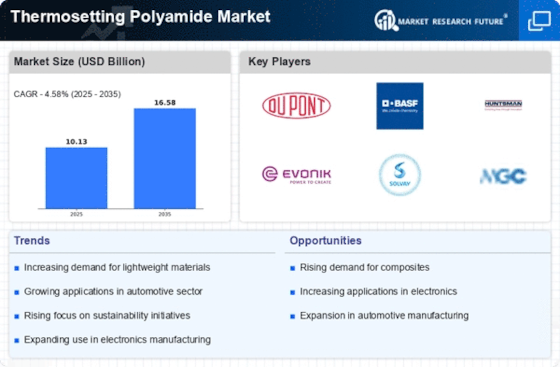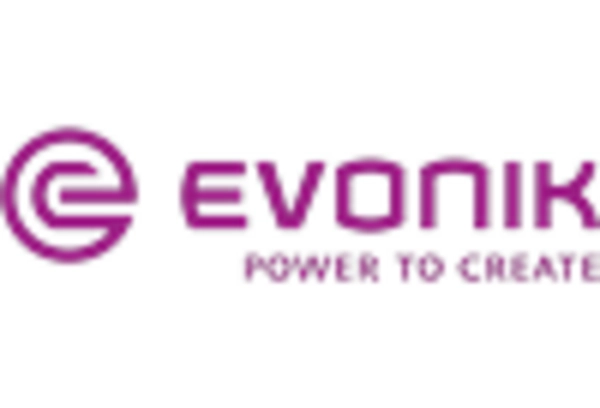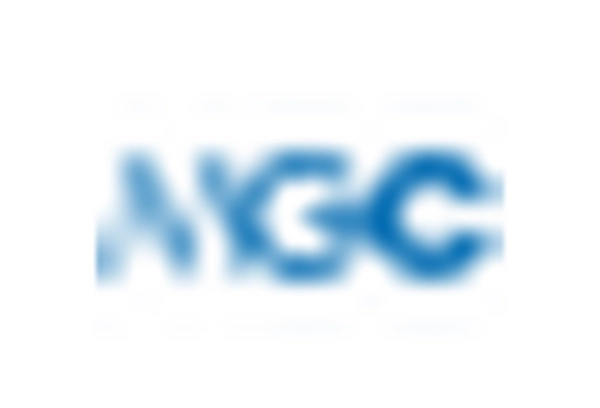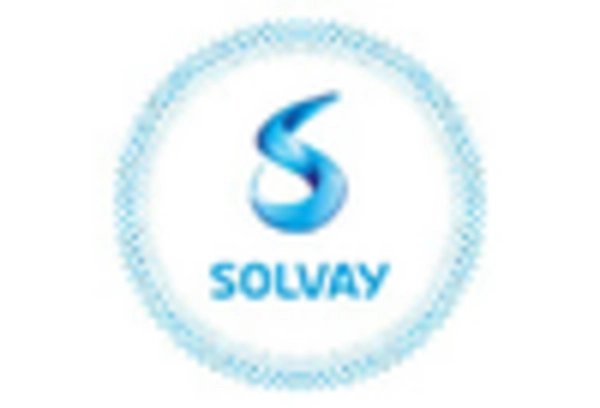Rising Demand in Electronics
The Thermosetting Polyamide Market is experiencing a notable increase in demand from the electronics sector. This surge is primarily attributed to the material's excellent thermal stability and electrical insulation properties, which are essential for various electronic components. As the electronics industry continues to innovate, the need for materials that can withstand high temperatures and provide reliable performance is paramount. In 2025, the demand for thermosetting polyamide in electronics is projected to grow by approximately 15%, driven by advancements in consumer electronics and the proliferation of smart devices. This trend indicates a robust future for thermosetting polyamide, as manufacturers seek materials that enhance product durability and efficiency.
Expanding Aerospace Applications
The Thermosetting Polyamide Market is witnessing a significant expansion in its applications within the aerospace sector. The lightweight and high-strength characteristics of thermosetting polyamide make it an ideal choice for aircraft components, where weight reduction is critical for fuel efficiency. In recent years, the aerospace industry has increasingly adopted advanced composite materials, with thermosetting polyamide composites gaining traction. By 2025, the market for thermosetting polyamide in aerospace applications is expected to grow by 20%, reflecting the industry's commitment to innovation and sustainability. This growth is indicative of the material's potential to meet stringent aerospace standards while contributing to overall performance improvements.
Innovations in Manufacturing Processes
The Thermosetting Polyamide Market is benefiting from innovations in manufacturing processes that enhance production efficiency and material performance. Advances in techniques such as injection molding and 3D printing are enabling manufacturers to create complex geometries and reduce waste. These innovations are likely to drive down production costs while improving the quality of thermosetting polyamide products. As these manufacturing technologies continue to evolve, the market is expected to see a growth rate of approximately 10% by 2025. This development suggests a promising future for thermosetting polyamide, as manufacturers leverage new technologies to meet the demands of various industries.
Growth in Construction and Infrastructure
The Thermosetting Polyamide Market is poised for growth due to the increasing investments in construction and infrastructure projects. The material's durability and resistance to chemicals make it suitable for various applications, including pipes, fittings, and structural components. As urbanization accelerates and infrastructure demands rise, the need for robust materials like thermosetting polyamide is becoming more pronounced. By 2025, the construction sector is projected to contribute significantly to the thermosetting polyamide market, with an expected growth rate of 12%. This trend highlights the material's versatility and its ability to meet the evolving needs of modern construction.
Increased Focus on Automotive Lightweighting
The Thermosetting Polyamide Market is significantly influenced by the automotive sector's ongoing focus on lightweighting. As manufacturers strive to enhance fuel efficiency and reduce emissions, the demand for lightweight materials has surged. Thermosetting polyamide offers a compelling solution due to its favorable strength-to-weight ratio and resistance to high temperatures. In 2025, the automotive segment is anticipated to account for approximately 30% of the total thermosetting polyamide market, driven by the increasing adoption of electric vehicles and stringent regulatory standards. This trend underscores the material's critical role in the automotive industry's transition towards more sustainable practices.


















Leave a Comment